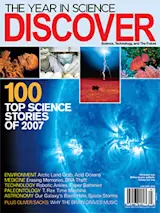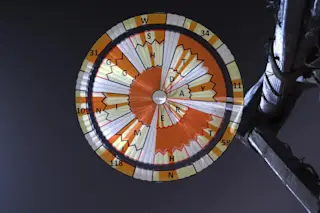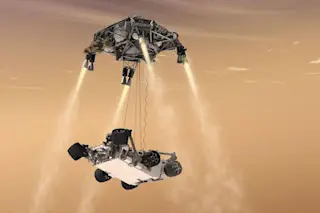After hunkering down for six weeks to ride out a planet-spanning dust storm, the Mars rover Opportunity got back to work in September and began a drive into Victoria Crater, the largest, deepest crater it has yet explored. The main research target was a band of white rock just below the rim that may yield clues to the planet’s wetter past.
Enormous dust storms are a fact of life on Mars, and one big enough to blanket the planet occurs every five or six years, says John Callas of NASA, the project manager for Opportunity and its twin, Spirit (currently exploring the other side of Mars). “The rovers were never designed to survive a storm of this magnitude,” Callas says. “The original 90-day mission avoided the usual dust storm season on Mars.”
The rovers’ unexpected longevity has forced their controllers to adapt to Mars dust. They cut back the rovers’ ...













